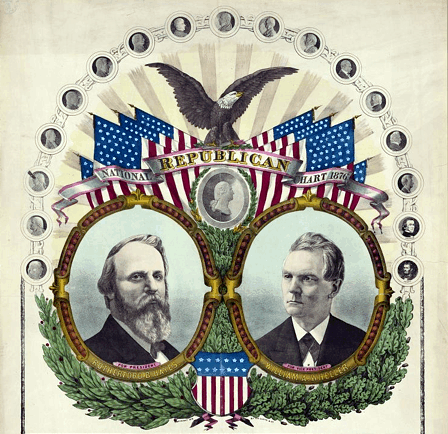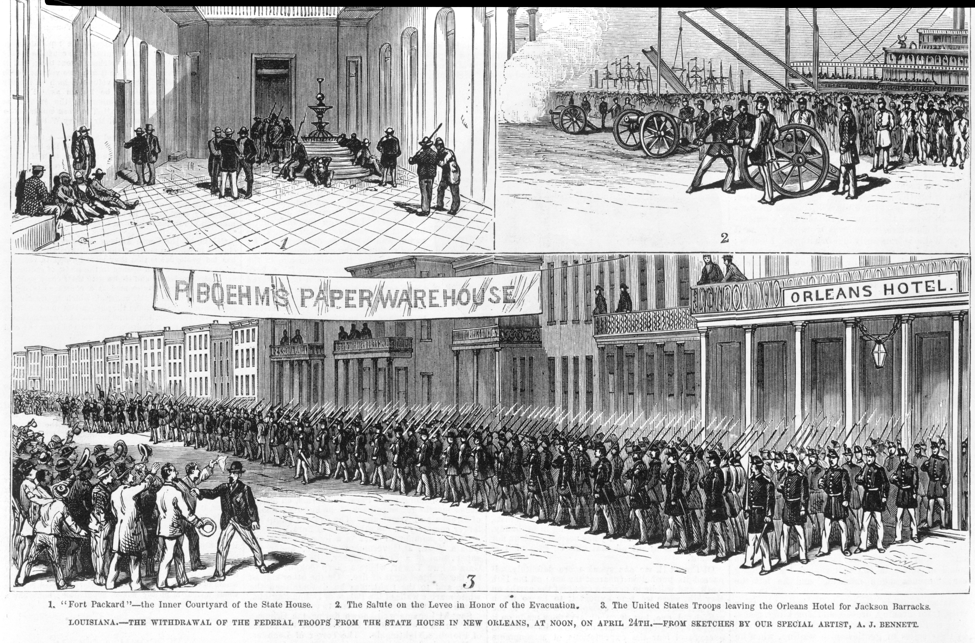|
Reconstruction
ended
in 1877 as a result of the Election of 1876 By 1876 many Americans wanted to put the disputes of the Civil War and Reconstruction in the past. Even in the North, many people came to believe it was time for the government to let the Southern states take care of their own affairs. The Election of 1876 led to a compromise that ended the Reconstruction era. The vote results were so close in the presidential race that leaders in Congress had to decide the winner. They agreed to name the Republican candidate the winner, if he would agree to pull the federal troops out of the South once he took office. In 1877, President Rutherford B. Hayes was officially sworn into office. As he had promised, he ordered all federal troops to leave the South. That officially ended Reconstruction. The Southern states were all back in the Union, and from that point on were managing their own affairs. |
 The Republican candidate, Rutherford B. Hayes, on the left, was declared the winner of the presidential election in 1876. |
|
Federal troops
left the South
This drawing from an old newspaper shows federal troops withdrawing from New Orleans, Louisiana, in 1877. Clockwise from upper left, the drawing shows:
|

|
Looking
Deeper:
Was Reconstruction a success? Yes and no! |
|
|
The
"plus" side
1. Slavery was ended forever everywhere in the U.S. 2. Blacks were all made full citizens of the U.S. 3. Blacks were given full legal equality with whites. 4. Blacks were given voting rights equal to whites. 5. Blacks started being elected to public office. 6. Northern businessmen moved into the South and helped start new businesses and industry. 7. Southern states began creating public school systems. |
The
"minus" side
1. Congress did not approve a plan to help freed slaves get land of their own. This left most freedmen with little choice but to work as laborers on farms owned by white landowners. 2. The decision by Congress to send federal troops back to supervise the Southern state governments kept alive the bitter feelings left at the end of the Civil War. 3. Anger about losing the Civil War, and problems during Reconstruction, left many white Southerners determined to push blacks out of the voting process and keep them in a less than equal status. This view would survive in the South for generations to come. |